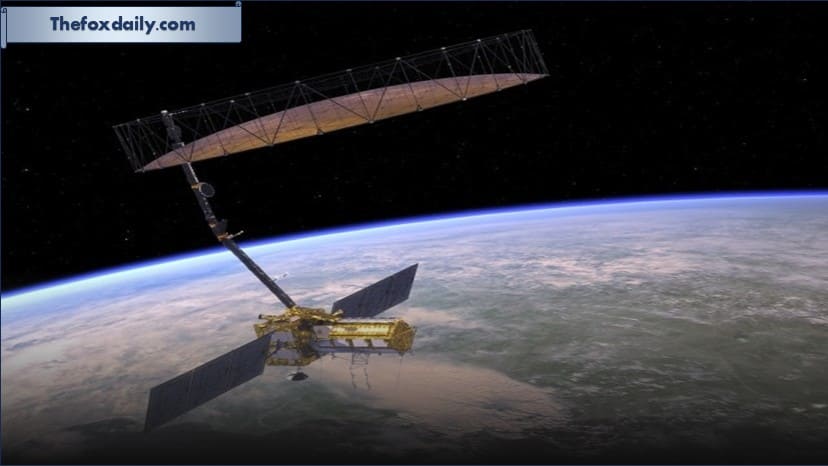
The gigantic antenna reflector on earth observation satellite NISAR, a joint Isro-Nasa mission, has successfully “bloomed” in space, marking a significant milestone in the satellite’s deployment phase. Confirming the successful antenna deployment, Nasa said in a statement that the step-wise unfurling of the antenna reflector with a diameter of 39 feet was completed Friday.
NISAR (Nasa-Isro Synthetic Aperture Radar) is the first collaboration satellite of the Indian Space Research Organisation (Isro) and the United State’s National Aeronautics and Space Administration (Nasa). NISAR, which cost $1.3 billion and weighed more than 2.8 tonnes, is the most costly earth observation satellite ever constructed.
NISAR was successfully placed into a sun-synchronous orbit after being launched by Isro on July 30 from the Satish Dhawan Space Centre in Sriharikota, Andhra Pradesh. The first-of-its-kind space project, NISAR, will investigate the solid, liquid, and frozen landforms of Earth. It is designed to track even the smallest changes in ice sheets, glaciers, forest coverage, oceans, soil moisture, earthquakes, and volcanic activity.
The world will be imaged once every twelve days by NISAR’s sophisticated twin radars. With the ability to see through clouds and provide all-weather imaging of the globe, the advanced radar systems on board combine two synthetic aperture radar (SAR) systems: an L-band system and an S-band system.

“The data NISAR is poised to gather will have a major impact on how global communities and stakeholders improve infrastructure, prepare for and recover from natural disasters, and maintain food security, from innovative technology to research and modeling to delivering science to help inform decisions,” stated Karen St Germain, director, Earth Science Division at the NASA headquarters.
The antenna and other satellite components are presently being fine-tuned by the NASA and ISRO teams.
NISAR will stay in its calibration and testing phase following the antenna’s deployment. NISAR will remain under a 65-day engineering phase, during which the preliminary tests and calibration will be performed. On day 65 (tentatively early October), the first, full-frame scientific data will be taken and the science teams will check for its quality and other parameters.
The NISAR team has stated that the mission’s actual science phase will begin on day 70, which is provisionally scheduled for mid-October. Data will be made available for usage as soon as it is received in the required quality.
NISAR’s scientific commissioning phase is scheduled to begin on day 90, which is tentatively early November.
For breaking news and live news updates, like us on Facebook or follow us on Twitter and Instagram. Read more on Latest Technology on thefoxdaily.com.




COMMENTS 0